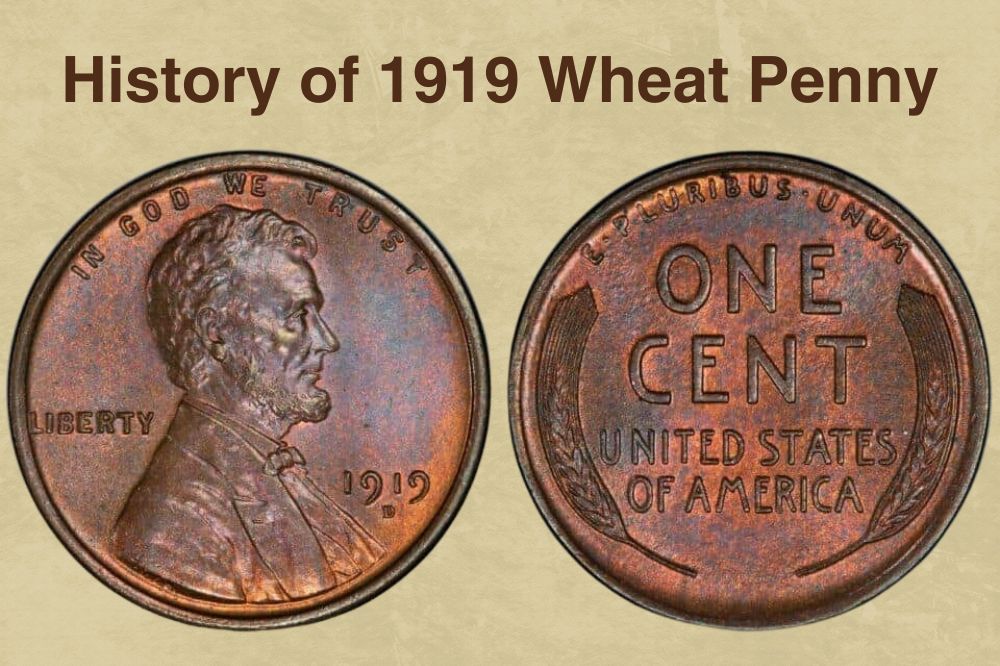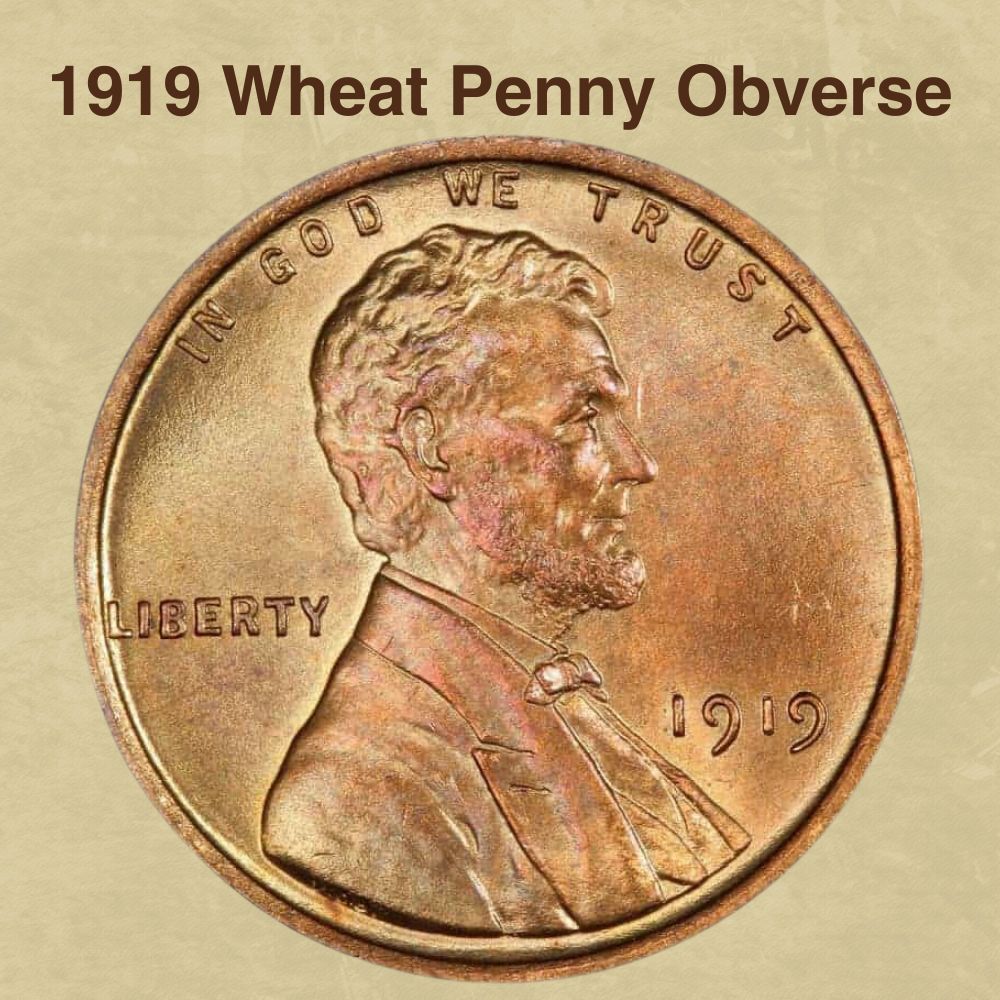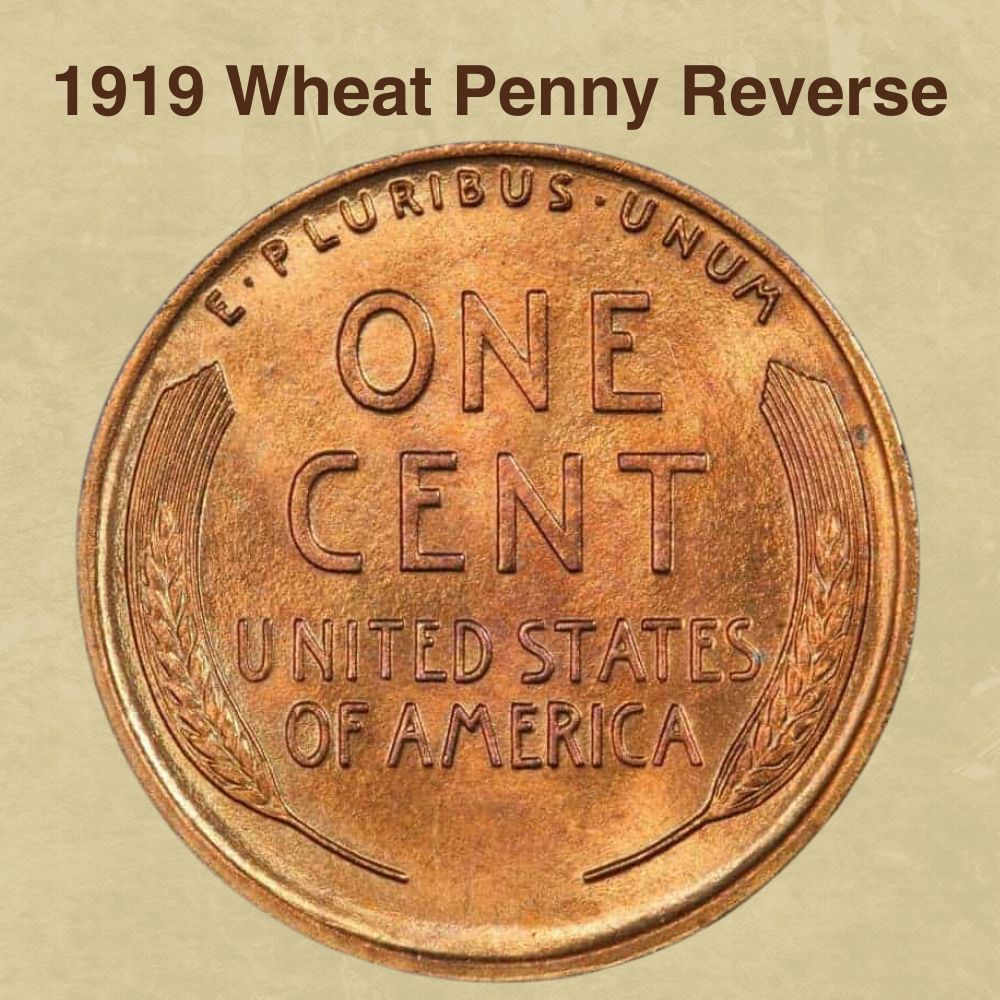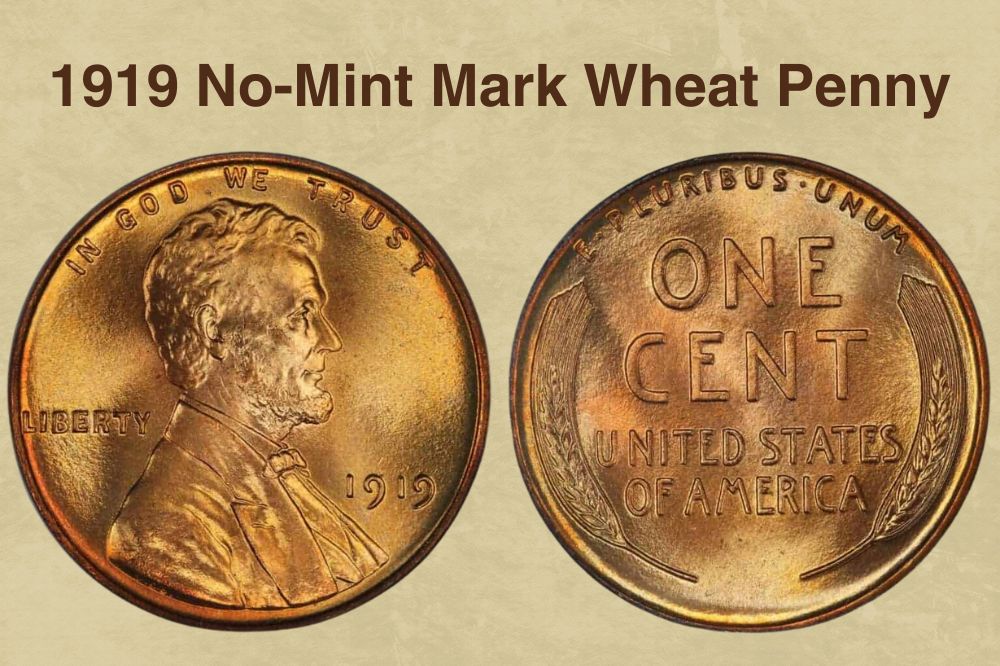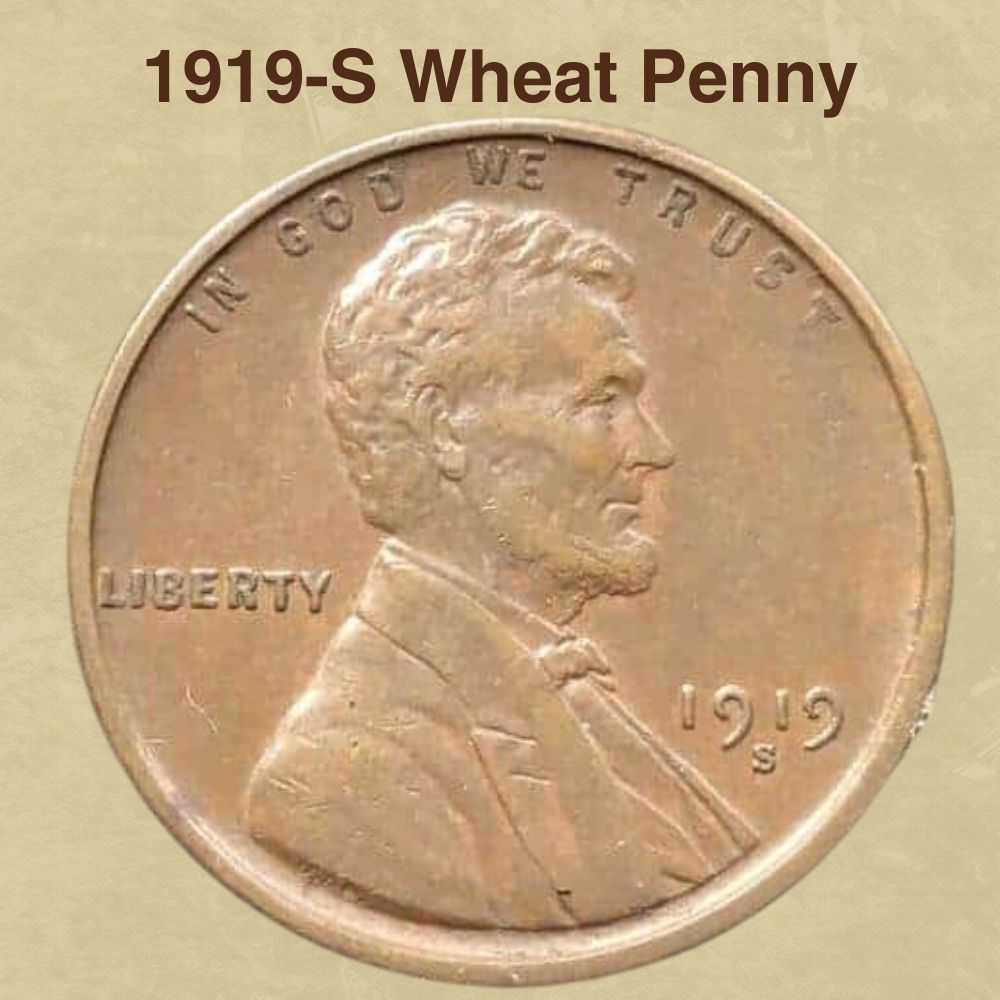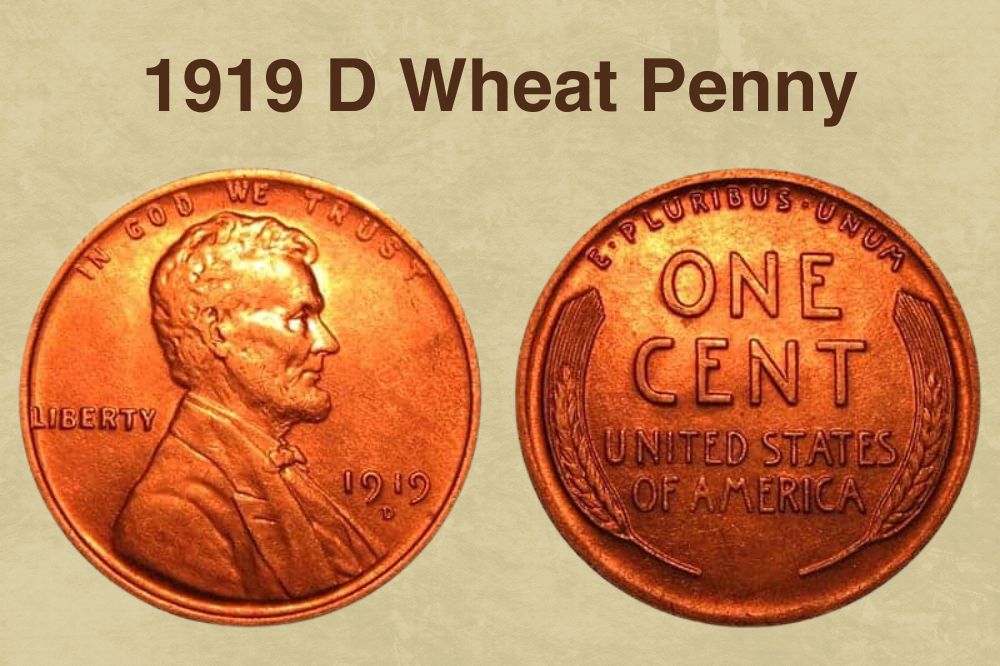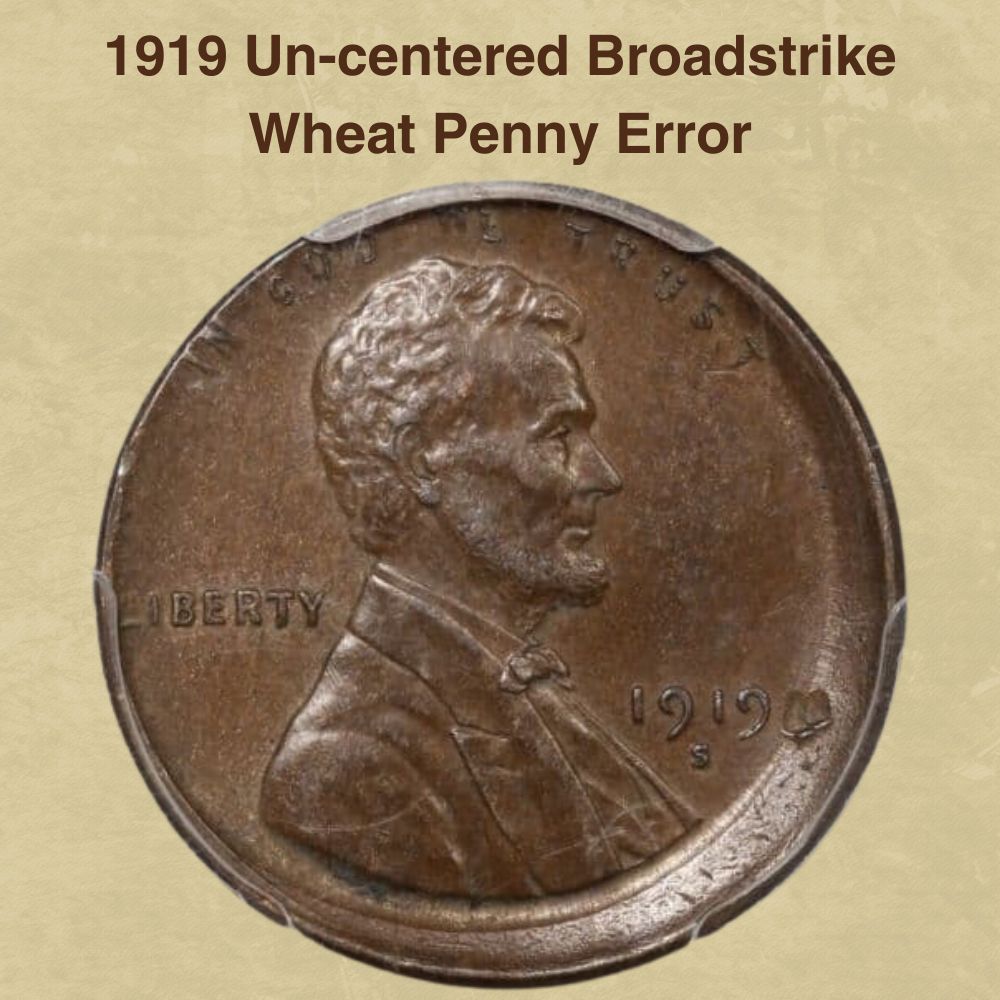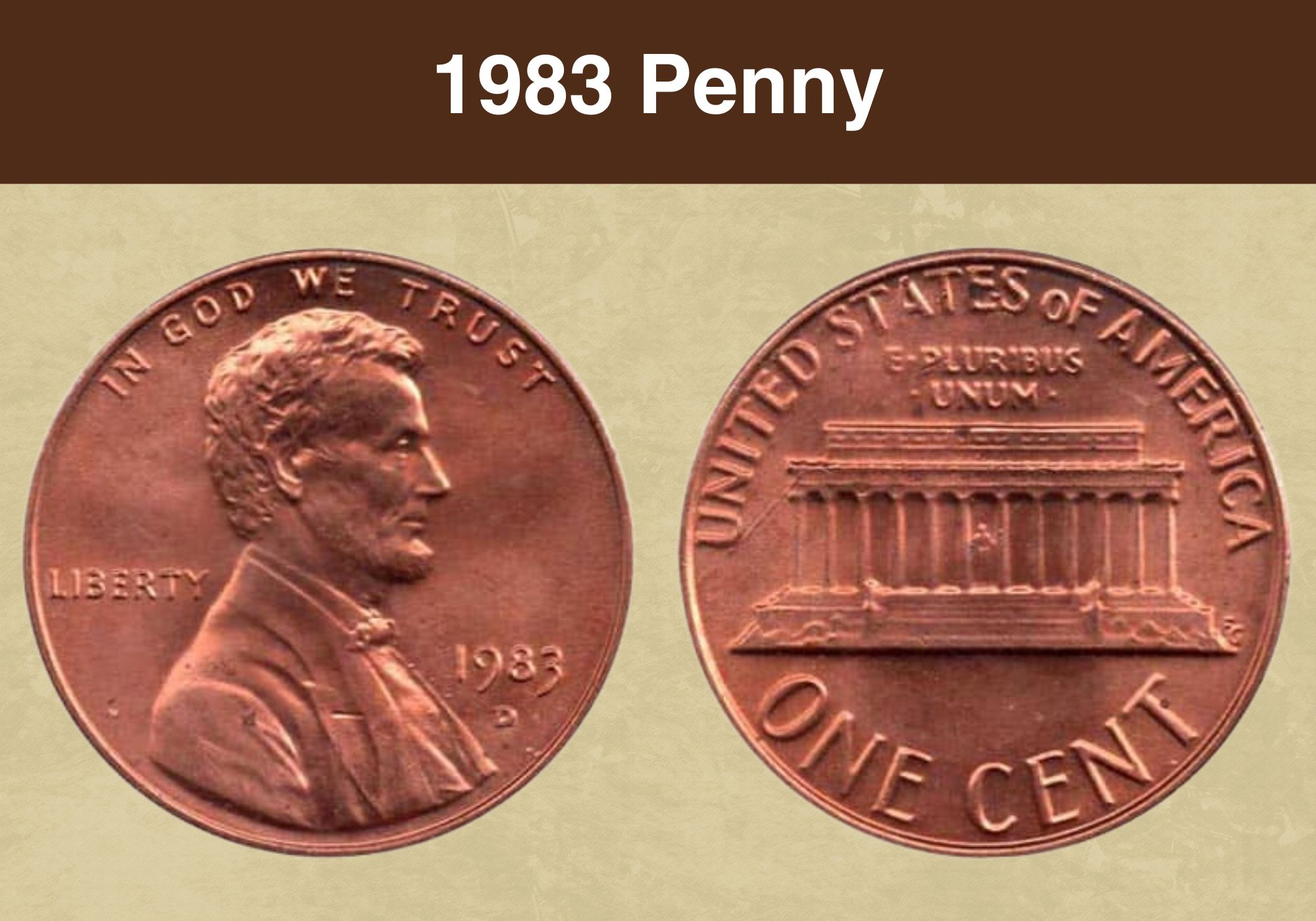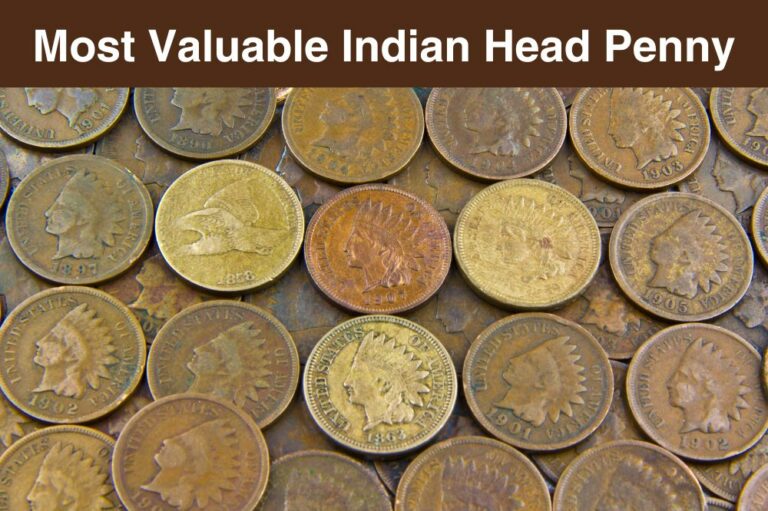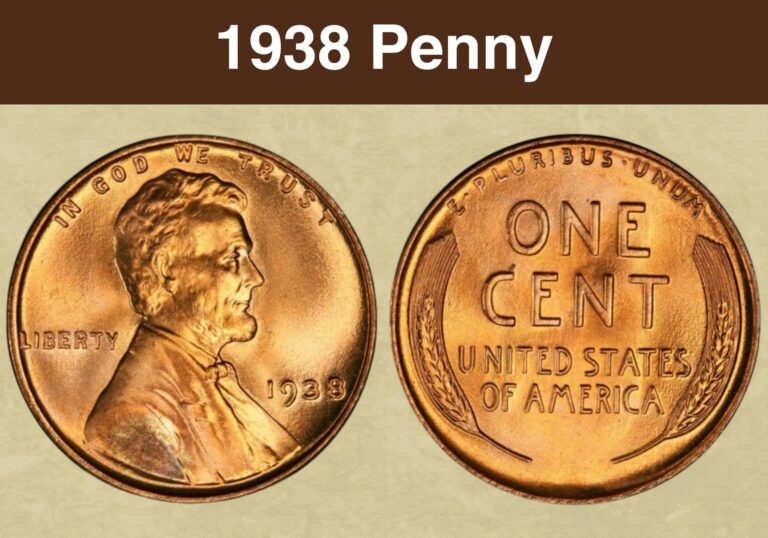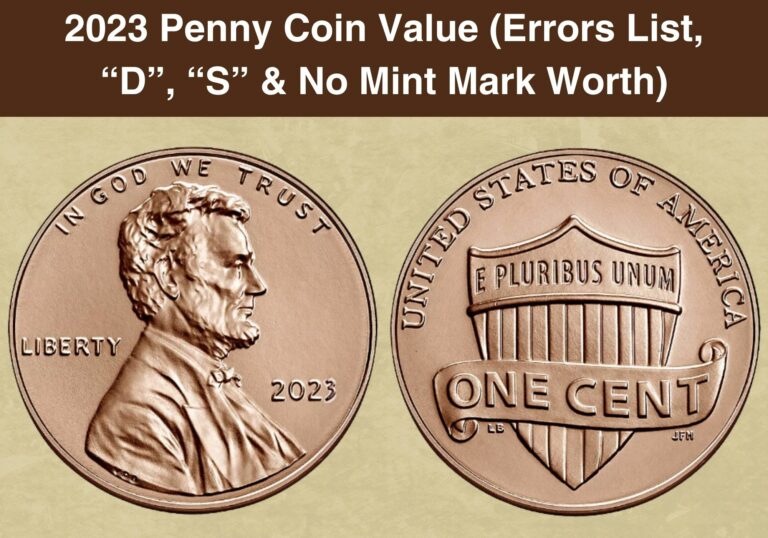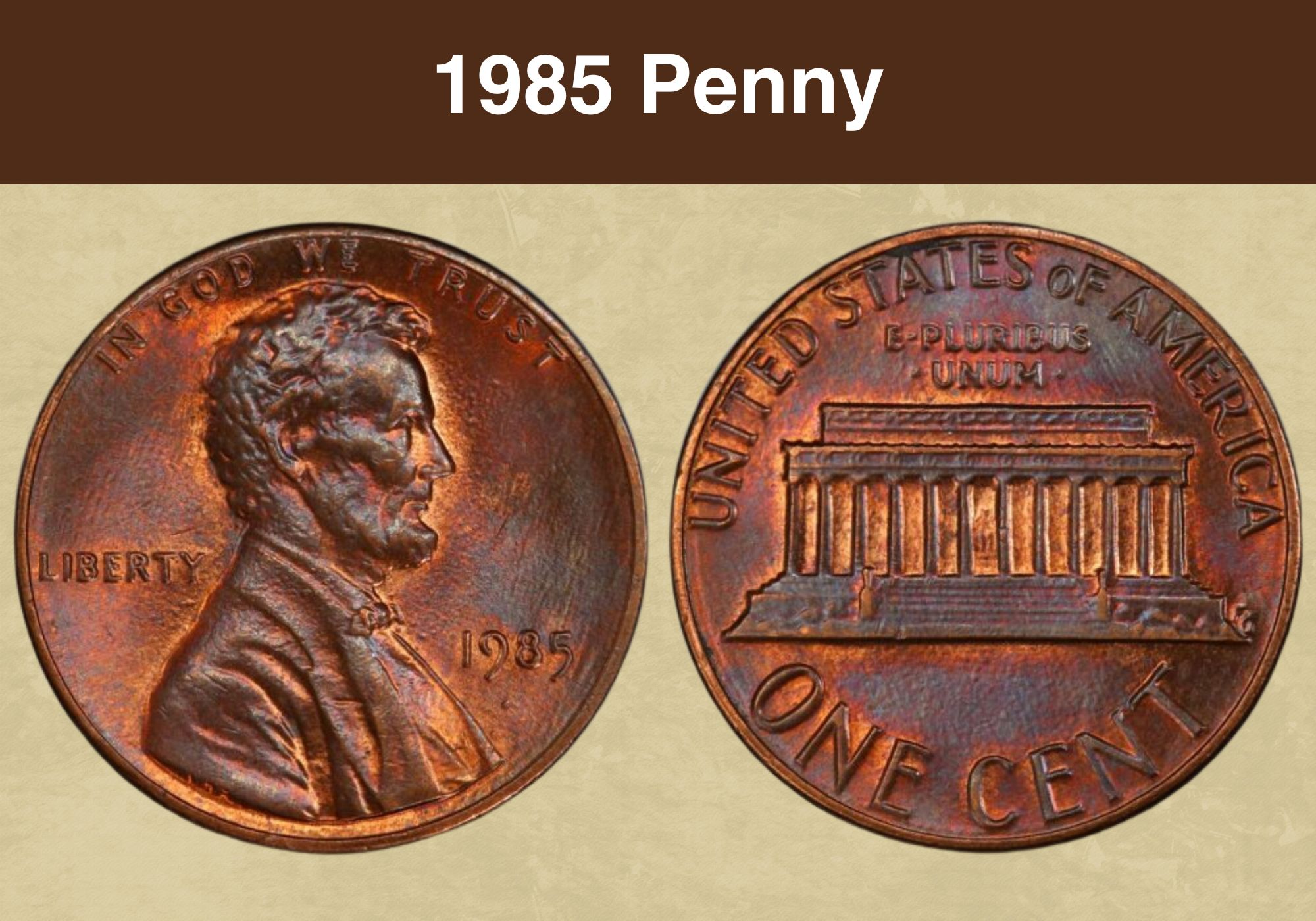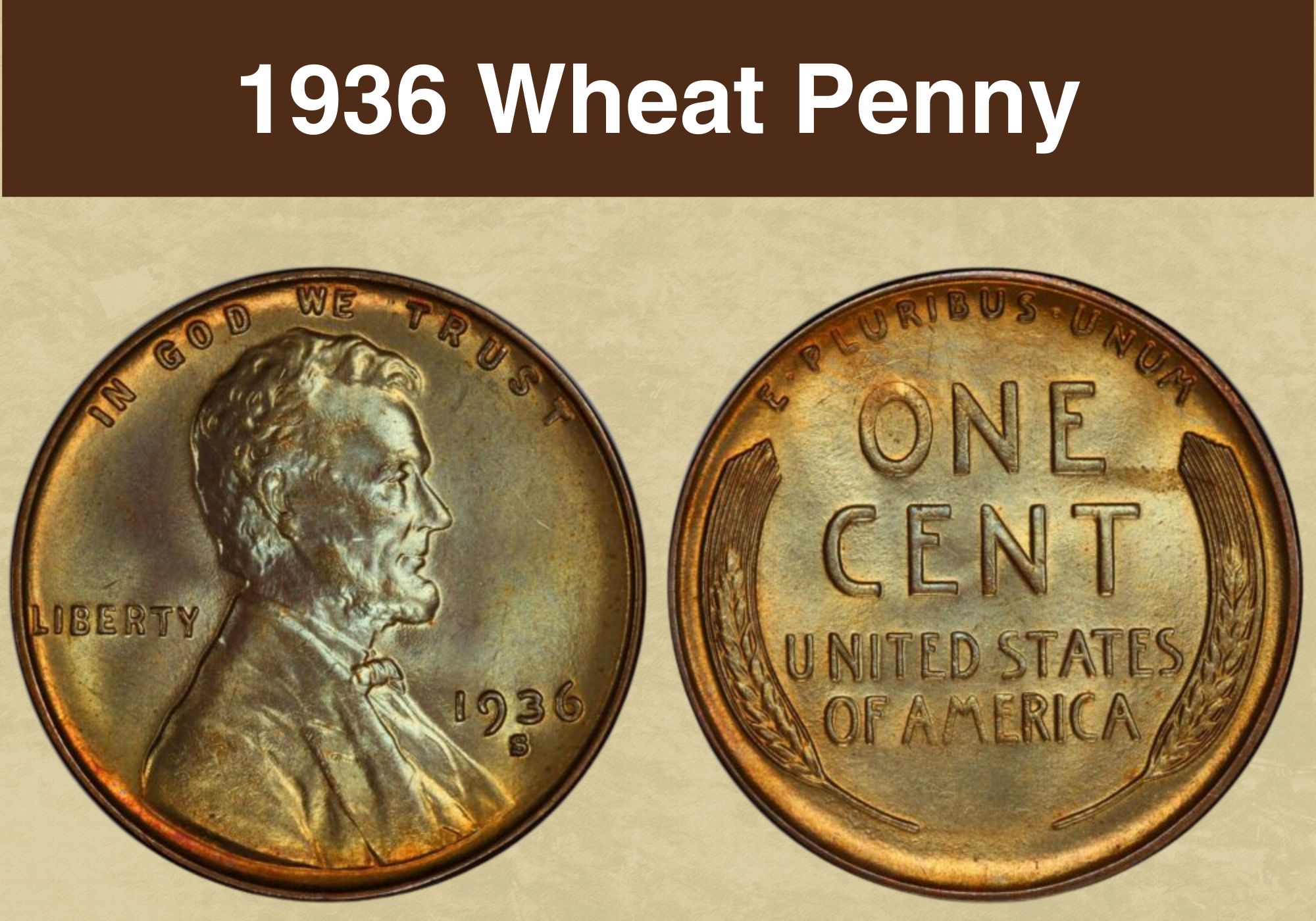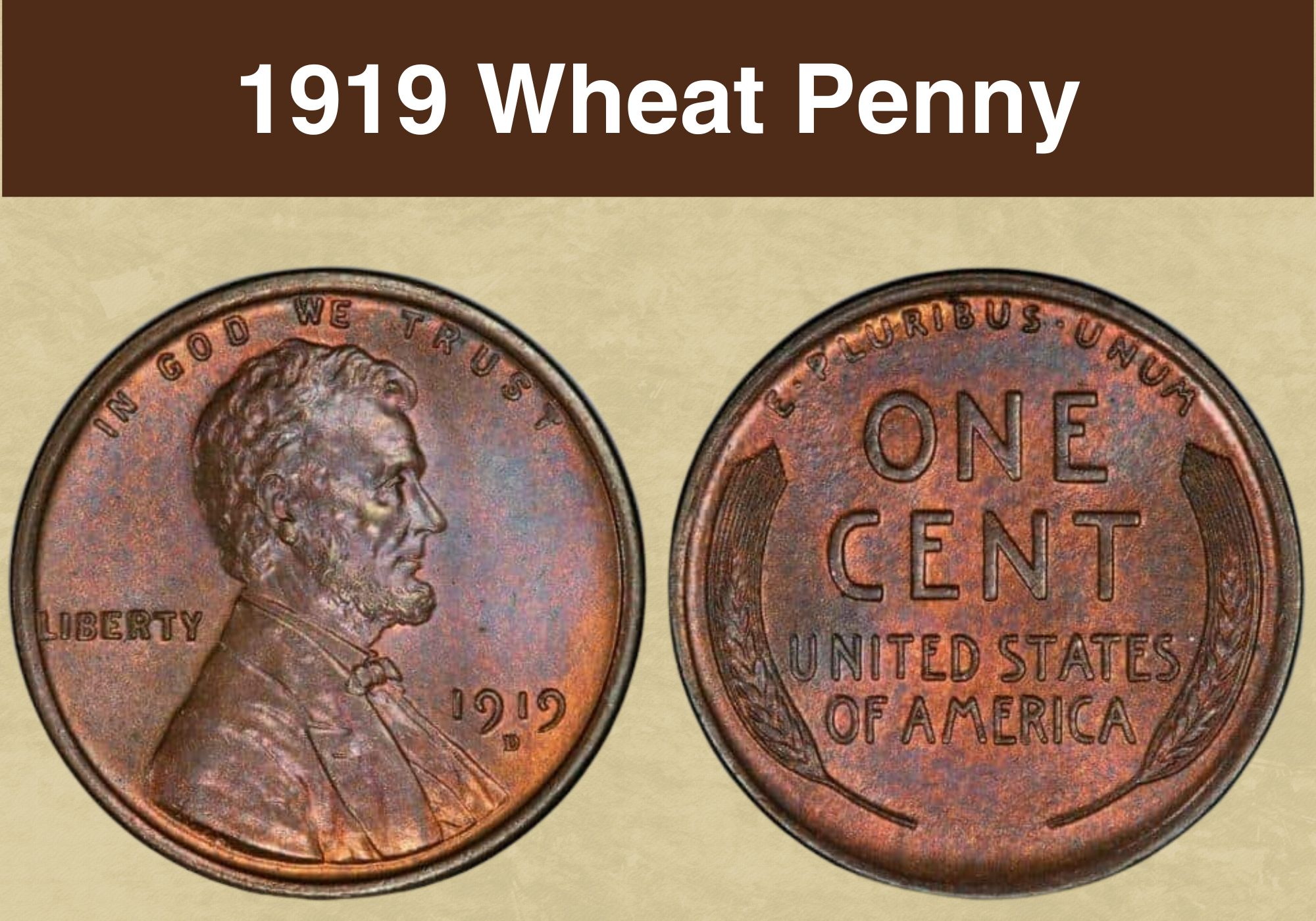
Coin Value Contents Table
Do you own a 1919 wheat penny and are curious about how much it is worth?
Or, are you interested in adding a 1919 wheat penny to your coin collection?
Wheat pennies are among the most collected coins in the Lincoln series both for their sentimental and financial value.
Although circulated coins are generally worth only their face value, 1919 wheat pennies in mint state can be worth hundreds or thousands of dollars. Wheaties with unique errors can also fetch a fortune.
This 1919 wheat penny value guide will explain everything you need to know about this popular coin. In the end, you will make a smart decision whether it is a worthwhile investment.
Let’s get started!
1919 Wheat Penny Value Chart |
||||
| Mint Mark | Good | Fine | Extremely Fine | Uncirculated |
| 1919 No-Mint Mark Wheat Penny Value | $0.22 | $0.40 | $3 | $140 |
| 1919-D Wheat Penny Value | $0.35 | $2.25 | $18 | $700 |
| 1919-S Wheat Penny Value | $0.35 | $2 | $10.50 | $650 |
History of the Wheat Penny
The wheat penny was first struck in 1909 to commemorate Abraham Lincoln’s 100th year birth anniversary. This was the first, widely circulating coin to feature a U.S. president on the obverse. The reverse of the penny featured two prominent wheat leaves, thus the name Wheat Penny or Wheaties.
President Theodore Roosevelt played an important role in the creation of a Lincoln penny. For a long time, Roosevelt had wanted to redesign some of the coins, including the one cent.
In 1908, the president sat for the sculptor, Victor David Brenner, for the making of the Panama Canal Commission medal. Although the content of their conversation is unknown, it is widely speculated that Roosevelt urged Brenner to think about designing a new Lincoln coin.
Indeed, the U.S. Mint director, Frank Leach, later commissioned Brenner to design a Lincoln penny. After many iterations, Brenner’s final design was accepted and the wheat penny was officially released on August 2, 2022.
When designing the Lincoln wheat penny, Brenner prominently included his initials, VDB, on the obverse but this proved to be so controversial that the Mint had to remove these initials. But, a few coins containing the VDB initials were already struck before the design was pulled out of circulation. However, the Mint restored the initials on the coin in 1918, placing the more conspicuously at the bottom of the coin around the rim’s edge. These so-called VDB coins are rare and highly sought-after by collectors.
Also read: 12 Most Valuable Lincoln Penny Worth Money
The Features of the 1919 Wheat Penny
Now let’s learn more about the unique attributes of the 1919 wheat penny. Knowing what to look for can help you spot a wheatie worth money.
The Obverse of the 1919 Wheat Penny
On the obverse of the 1919 wheat penny, you will find the right-facing portrait of the 16th president of the United States, Abraham Lincoln.
The country’s motto, IN GOD WE TRUST, appears along the coin’s ring at the top. The date, 1919, is inscribed on the right while the word LIBERTY appears on the left behind Lincoln’s back.
On closer look you will notice the initials VDB where the rim cuts off Lincoln’s shoulder. These initials were restored in 1918 wheat pennies and appear on the 1919 coins too.
The Reverse of the 1919 Wheat Penny
The reverse of the 1919 wheat penny features two wheat ears flanking each side of the coin. These two iconic wheat ears is where the name ‘’wheat penny’’ comes from.
At the top along the rim is the phrase E PLURIBUS ENUM. The coin’s denomination ONE CENT and the country’s name appear in the middle of the coin, ensconced in between the wheat ears.
Other Features of the 1919 Wheat Penny
The 1919 Lincoln wheat penny is comprised of 95% copper and a 5% zinc and tin alloy. It weighs 3.11 grams and measures 19.00 millimeters in diameter.
Both the obverse and reverse of the coin were designed by Victor David Brenner. In addition to the VDB initials you will also notice the mint marks D or S on the coin’s obverse, signifying that the coin was struck in Denver or San Francisco respectively.
The Philadelphia mint also struck wheat pennies in 1919 but these coins do not have a mint mark.
Also read: 13 Most Valuable Wheat Penny Worth Money
1919 Wheat Penny Grading
Grading wheat pennies entails examining the coin’s condition and assigning it a graded based on the extent of wear and tear.
Circulated 1919 wheaties are generally worth more or less their face values, so it is best to focus on uncirculated pennies to add to your collection.
Uncirculated pennies show no signs of wear, despite the coin’s age. Use a loupe to examine the area around Lincoln’s jaw and cheek; there should be no sign of smoothness, dullness or wear.
Luster and gloss is desirable in uncirculated 1919 wheat pennies. A red surface is more attractive but slight browning is acceptable as long as there are no signs of wear.
Key areas to pay attention to on the obverse are right underneath Lincoln’s eye and his beard, which should show no signs of smoothness or wear. Another high point to inspect is the president’s coat, more specifically, the front edge that should retain luster in uncirculated coins.
On the reverse, check for frosting, present in an uncirculated coin. Specifically, examine the words ONE CENT for the desired frosting. Luster should also be present on the coin’s field.
| # | Grade |
|---|---|
| 1 | Basal State-1 |
| 2 | Fair |
| 3 | Very Fair |
| 4, 5, 6 | Good |
| 7, 8, 10 | Very Good |
| 12, 15 | Fine |
| 20, 30 | Very Fine |
| 40 | Extremely Fine |
| 50 | About Uncirculated |
| 60 | Mint State |
| 65 | Mint State |
| 70 | Mint State |
Please check our grading guides to know your coin scale, It’s the necessary step to know the exact value of your coin.
Check out now: How to Grade Lincoln Wheat Penny?
1919 Wheat Penny Value Guide
So, how much is a 1919 wheat penny worth?
In this section we will found out whether a wheat penny from 1919 is worth any money. There are three varieties of the 1919 wheaties. These are the:
- 1919 no mint mark wheat penny
- 1919-D wheat penny
- 1919-S wheat penny
Let’s now look at the value of each.
1919 No-Mint Mark Wheat Penny Value
A record 392,021,000 wheat pennies were struck at the Philadelphia mint in 1919, one of the highest early-date mintage records that was only superseded by the 1940 wheat penny mintage.
Due to the sheer number that was struck and released into circulation, 1919 no-mint mark wheat pennies are very common and can still be found in circulation to date.
The high mintage and easy availability depreciates the value of these coins. In circulated condition, a 1919 no-mint mark wheat penny can fetch between $0.2 and $10 depending on the coin’s condition.
These coins are affordable and easily accessible in mint state. A 1919 penny graded mint state (MS) 60 with a few scruffs and contact marks can bring in as much as $13 while a gem quality MS67 penny can bring in up to $140.
The most expensive red color 1919 no-mint mark wheat penny graded MS68 was auctioned for a whopping $18,000 at a 2018 Heritage auction.
Red wheat pennies are more desirable than their brown and red-brown counterparts. These brilliant red coins have retained their luster and have few, if any, contact marks and other signs of wear.
1919-S Wheat Penny Value
About 139,760,000 wheat pennies were struck at the San Francisco mint in 1919, the second highest mintage that year.
These coins are quite common and you can still find them in circulation today. However, despite the high mintage, finding gem quality 1919-S wheat pennies can be difficult. This is because the San Francisco mint used numerous poor quality dies resulting in coins with a low-quality strike.
In addition, in 1919 there weren’t as many collectors interested in preserving 1919 wheaties, so a lot of the coins you will find are worth more or less their face value.
In circulated condition, expect your 1919-S wheat penny to be worth about $0.35 although this price can increase to $45 for a coin graded About Uncirculated (AU) 58.
The 1919 wheat pennies with an S are more valuable in mint state with. A brown wheatie graded MS67 can bring in as much as $650, while a red brown and red in the same grade can fetch up to $1,750 and $55,000 respectively.
1919-D Wheat Penny Value
The Denver mint produced the fewest number of wheat pennies that year at a mintage of 57,154,000.
With such a comparably low mintage, 1919-D wheat pennies are scarcer than the ones minted at the Philadelphia and San Francisco facilities
Still, the 1919-D wheat pennies were of the highest mintage from the Denver facility, a record that would not be surpassed until 1940.
In circulated condition, a 1919-D wheatie is worth about $0.35 but this price point can go to $55 for an AU58 penny. At grade MS67, a brown penny can bring as much as $700. A red brown at the same grade is worth about $1,950 while a red, gem quality can sell at a premium of $50,000.
Also read: 17 Most Valuable Indian Head Penny Worth Money
Rare 1919 Wheat Penny Errors List
Errors can increase the value of your wheat penny. But, errors are not all the same; some are worth more than others so it helps to know which ones to pay attention to.
Here are 1919 wheat penny errors worth money:
1919 L on Rim Doubled-Die Obverse Wheat Penny Error
This coin has two errors. In the first error, you will notice the L on LIBERTY on the obverse is struck on top of the rim instead of on the coin’s surface.
The second is a doubled-die error. The doubling is visible on LIBERTY and 1919. This error occurs when the die strikes the lettering multiple times but at different angles, causing an overlapping effect.
Collectors are willing to pay as much as $265 for the L on rim doubled-die obverse error on the 1919 wheat penny.
1919 Misaligned Die Wheat Penny Error
Sometimes, the die used to strike the design on the coin can be off-angle or misaligned, therefore imprinting a partially rotated design.
The design can be rotated at an angle, depending on the die misalignment whether that is 30, 60, 90, 180 or in rare cases, 360-degree angle.
A 1919 misaligned die wheat penny error is conspicuous and can easily fetch up to $200. Examples in mint state can bring more.
1919 Obverse Lamination Crack Wheat Penny Error
A lamination error occurs when small pieces of metal break off a coin or planchet’s surface. This is caused by the presence of impurities that cause the metal to flake off along weak points of the coin.
An example of a 1919 wheat penny with a lamination crack on the obverse can sell for about $110 but this figure might increase depending on the coin’s condition and the extent of the crack.
1919 Un-centered Broadstrike Wheat Penny Error
A broadstrike error occurs when the punching die strikes the coin outside of its collar. The collar holds the coin in place and helps in retaining the coin’s diameter during the punching process.
As a result of the broadstrike, the coin appears wider than normal. An uncentered error of this nature occurs when the design is struck outside of the collar and away from the center.
For a 1919 wheat penny with an un-entered broadstrike error, collectors are willing to pay up to $235.
Also read: 11 Most Valuable Wheat Penny Errors
Where to Sell Your 1919 wheat penny ?
Now that you know the value of your coins, do you know where to sell those coins online easily? Don’t worry, I’ve compiled a list of these sites, including their introduction, pros, and cons.
Check out now: Best Places To Sell Coins Online (Pros & Cons)
FAQ
What makes a 1919 wheat penny rare?
The wheat pennies from 1919 are not rare; the mints struck millions of these coins and you can easily find them in circulation. That said, there are some rare 1919 Lincoln wheat pennies and these are the ones with notable errors such as broadstrike and doubled-die errors. Coins from this year were very well struck, so errors are uncommon. If you do come across a 1919 wheatie with what seems like an error, your coins might be worth a lot.
Is a 1919 wheat penny worth a lot of money?
A 1919 wheat penny is generally worth its face value in circulated condition. Your coin might be worth anything from hundreds to thousands of dollars if it is in mint condition, preferably with red coloring. Any 1919 penny lower than mint state is not worth a lot of money and is quite affordable even for new investors and collectors.
What is a 1919 wheat penny made of?
Copper (95%) and alloy of zinc and tin (5%) are the main metals that make up 1919 wheat pennies. In the 1940s, this composition changed to zinc-plated steel and then to copper-plated zinc in 1980s.

